58+ Sample Accident Reports
-
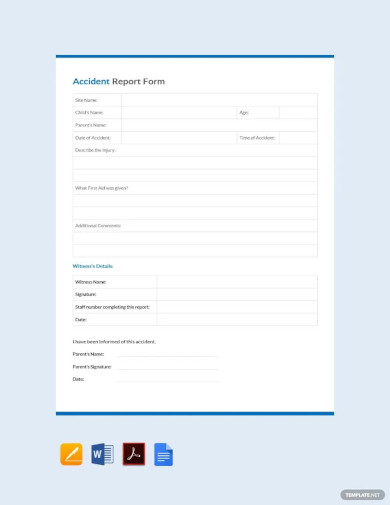
Accident Report Form Template
download now -
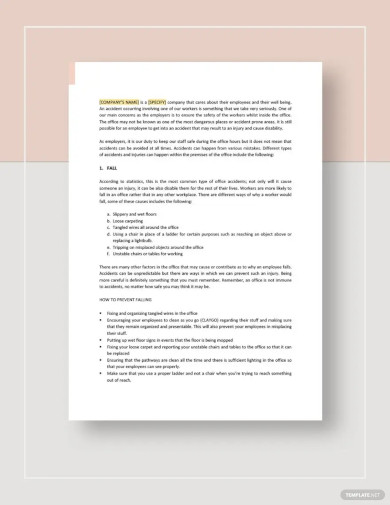
Sample Accident Report Template
download now -
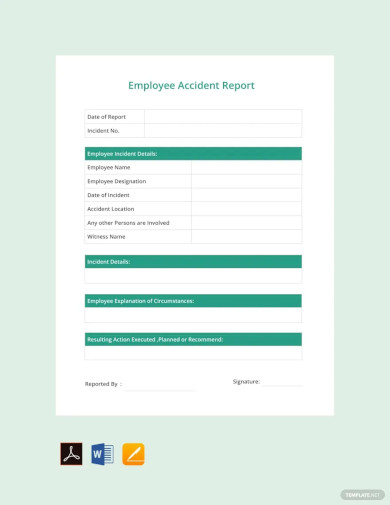
Employee Accident Report Template
download now -
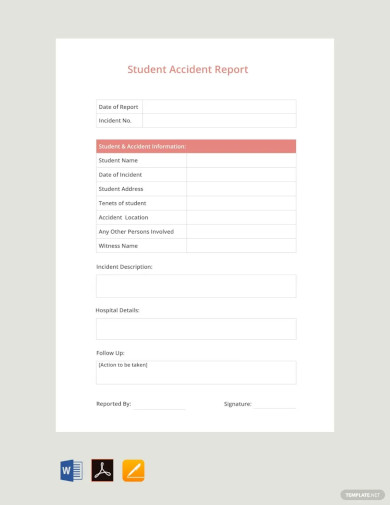
Free Student Accident Report Template
download now -

Car Accident Report Template
download now -
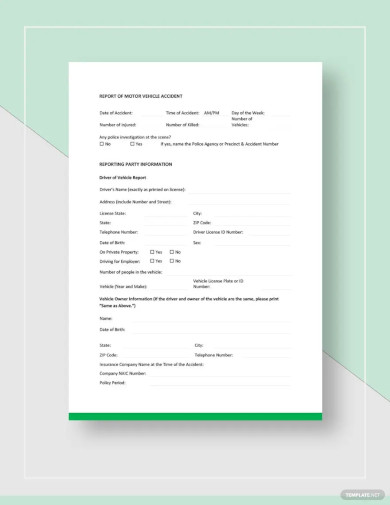
DMV Accident Report Form Template
download now -
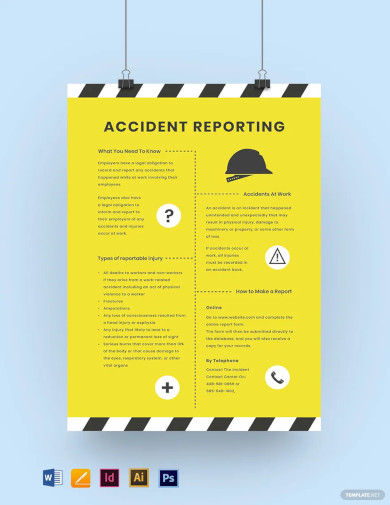
Accident Reporting Poster Template
download now -
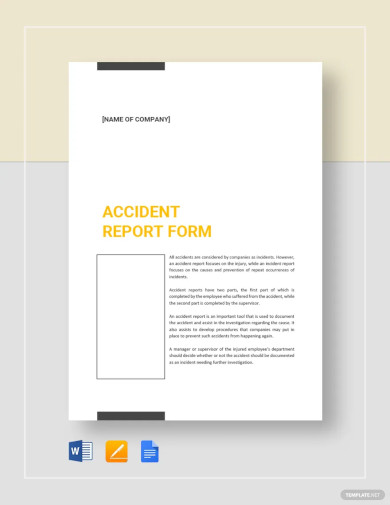
Sample Accident Report Form Template
download now -
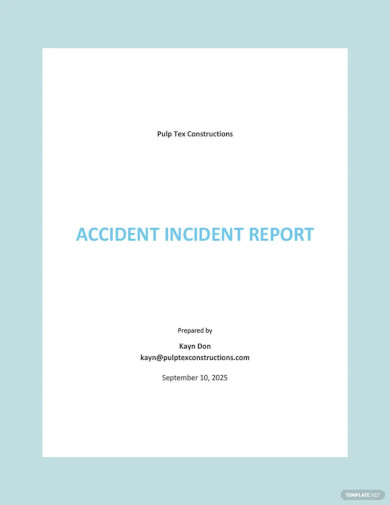
Accident Incident Report Template
download now -
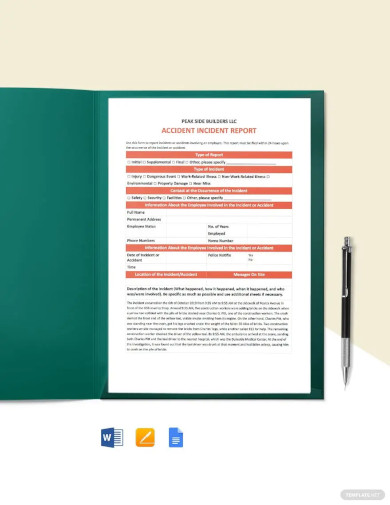
Accident Incident Report
download now -
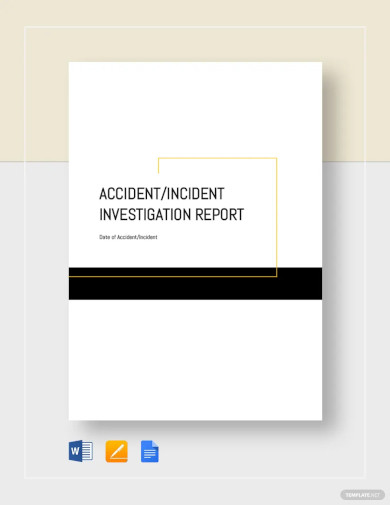
Accident Incident Investigation Report Template
download now -
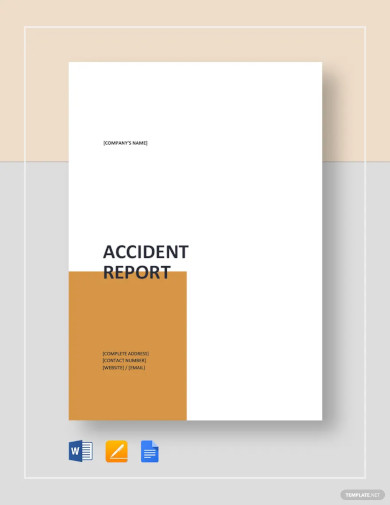
Accident Report Template
download now -
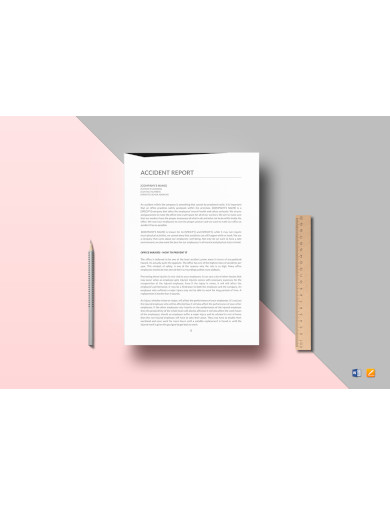
Basic Accident Report Template
download now -
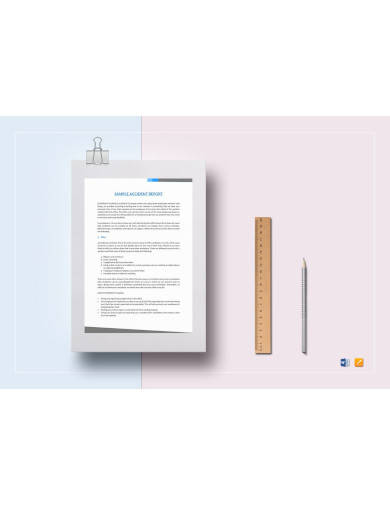
Generic Accident Report Template
download now -
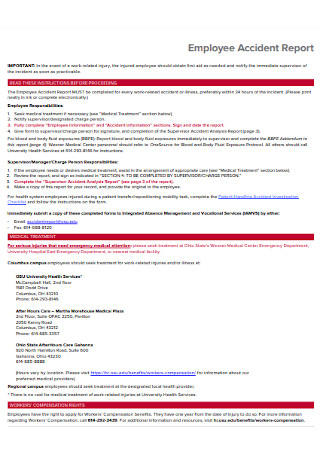
Employee Accident Report
download now -

Vehicle Accident Report
download now -
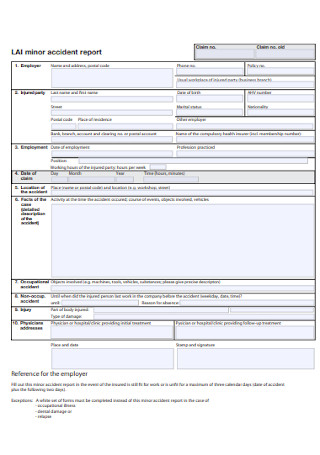
Minor Accident Report
download now -
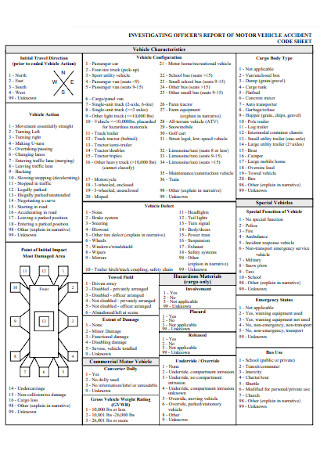
Investigating Officers Report of Vehicle Accident
download now -

Auto Accident Writing Report Form
download now -
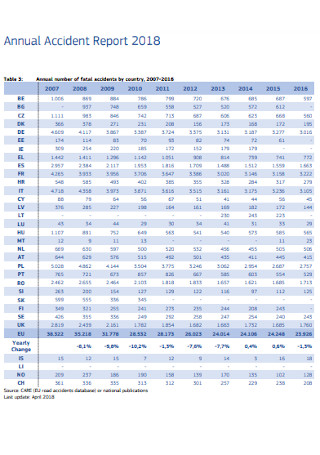
Annual Accident Report Letter
download now -
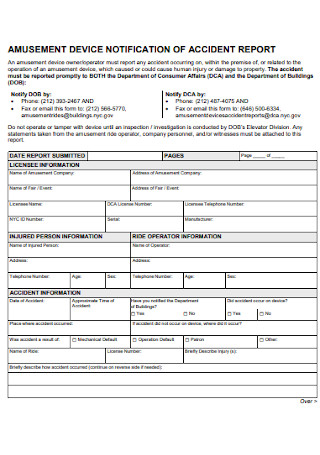
Blank Accident Report
download now -
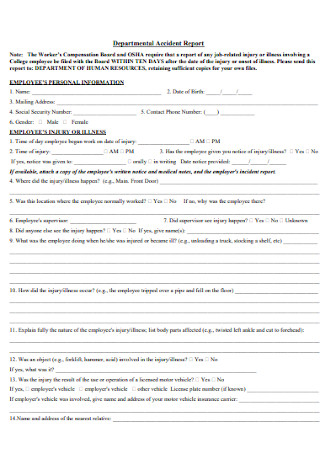
Departmental Daycare Accident Report
download now -

Printable School Accident Report Form
download now -

Monthly Construction Accident Report
download now -

Preschool Accident Investigation Report
download now -
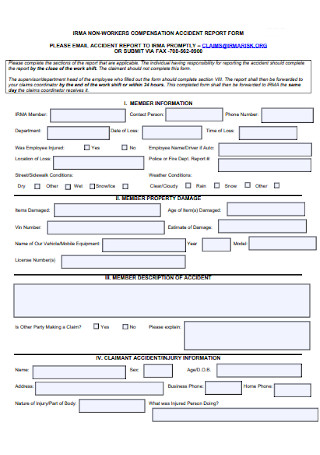
Business Workers Accident Report
download now -
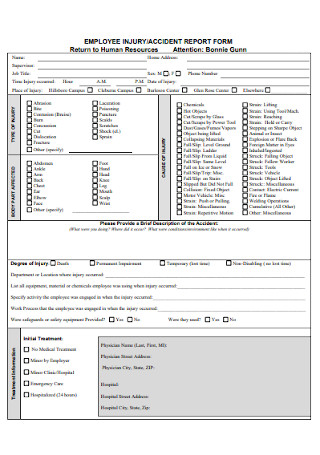
Employee Medical Injury Accident Report
download now -

Accident Security Injury Report
download now -
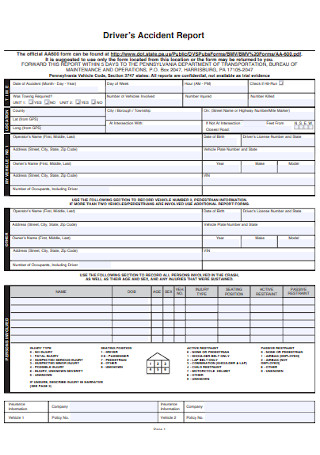
Customer Drivers Accident Report
download now -
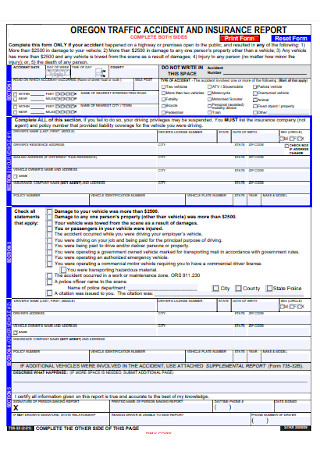
Restaurant Accident Report
download now -
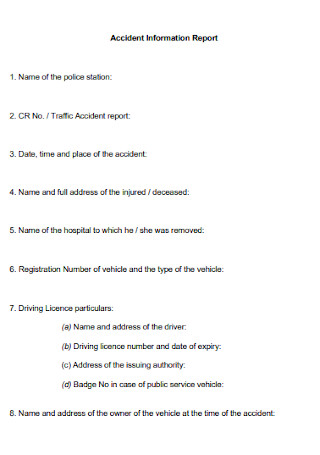
Accident Site Report
download now -
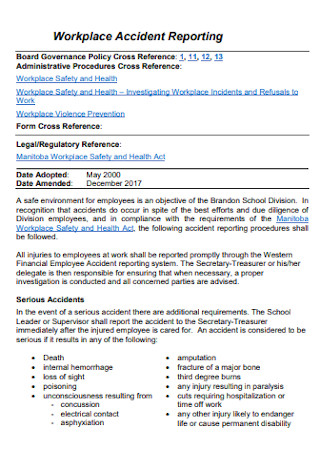
Workplace Electrical Accident Report
download now -

Vehicle Accident First Aid Report
download now -
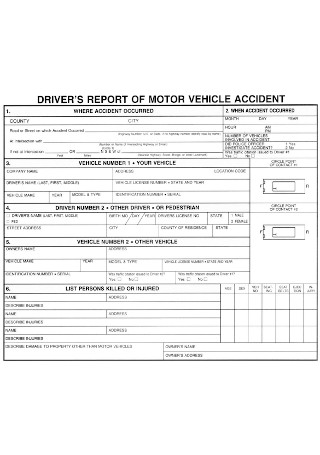
Motor Vehicle Child Accident Report
download now -
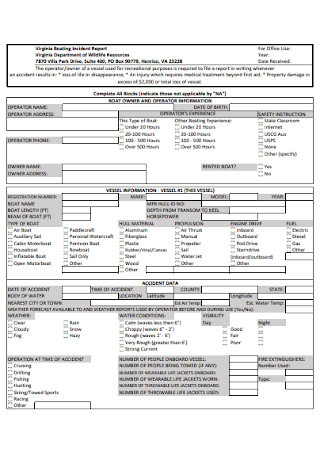
Today Accident Report
download now -

Accident Investigation Completed Report
download now -
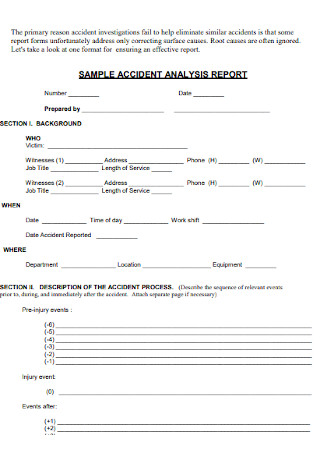
Sample Accident Analysis Report
download now -

Sample Accident Report Form
download now -
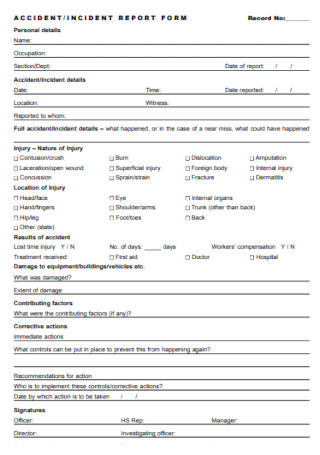
Accident Report Form
download now -
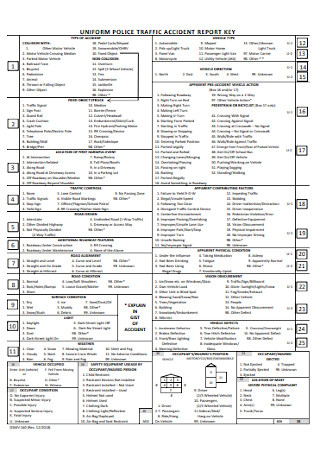
Police Traffic Accident Report
download now -
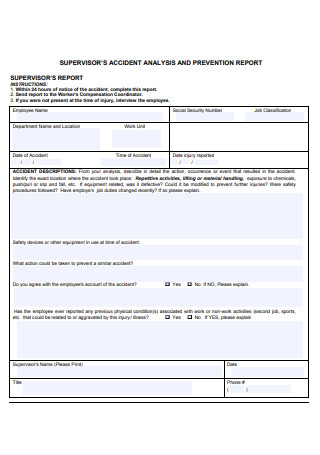
Accident Analysis and Prevention Report
download now -
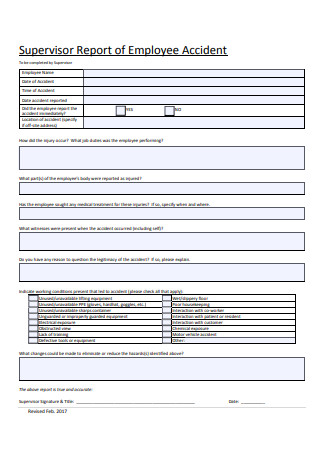
Supervisor Report for Employee Accident
download now -
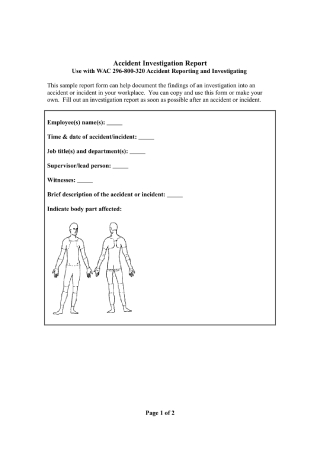
Sample Accident Investigation Report
download now -
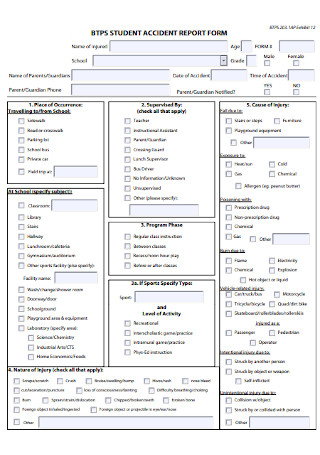
Student Accident Report
download now -
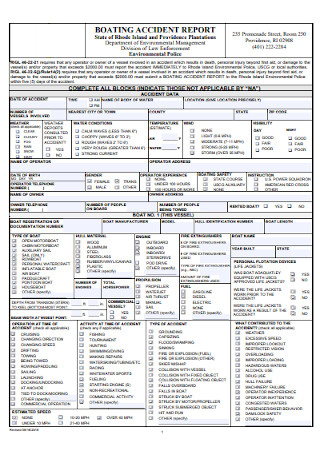
Sample Boating Accident Report
download now -
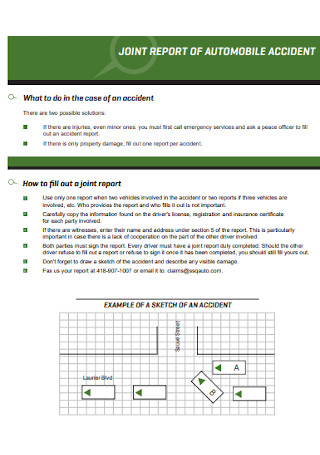
Joint Accident Report
download now -
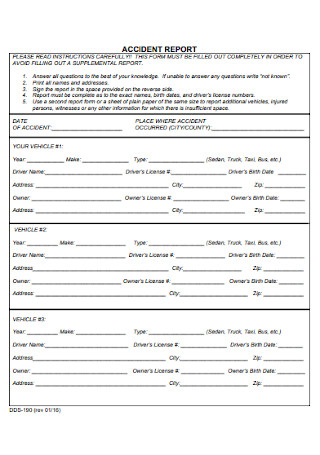
Accident Report Format
download now -
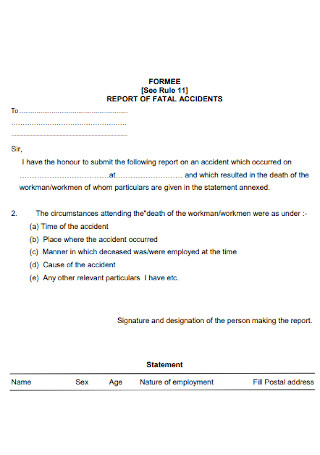
Report of Fatal Accident
download now -
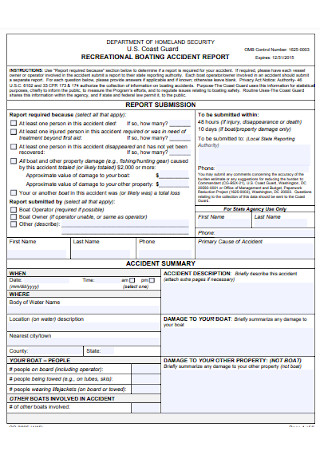
Recreational Boating Accident Report
download now -
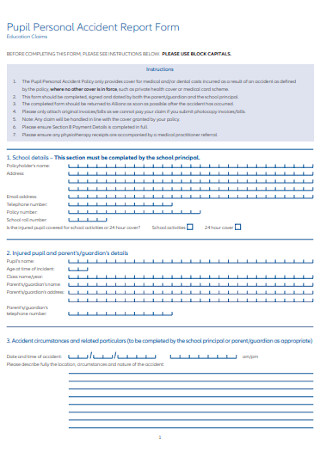
Personal Accident Report Form
download now -
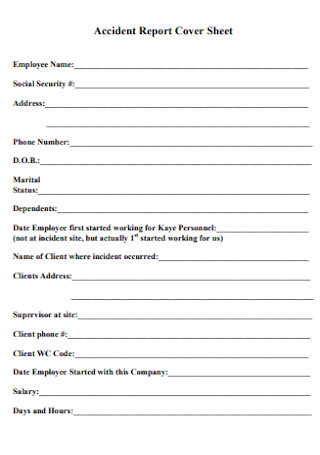
Accident Report Cover Sheet
download now -
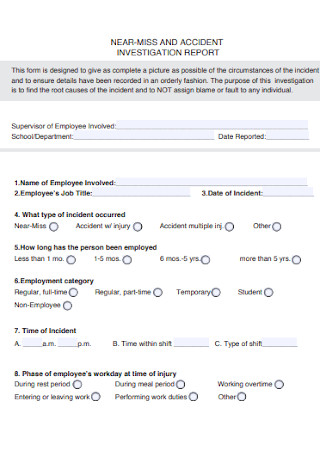
Near Miss and Accident Report
download now -
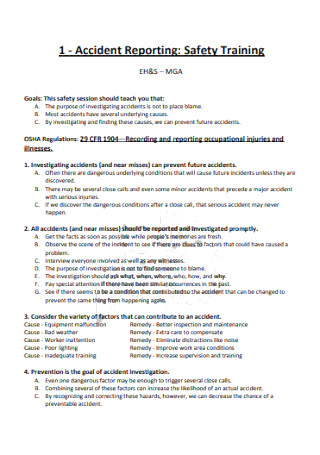
Accident Safety Training Report
download now -
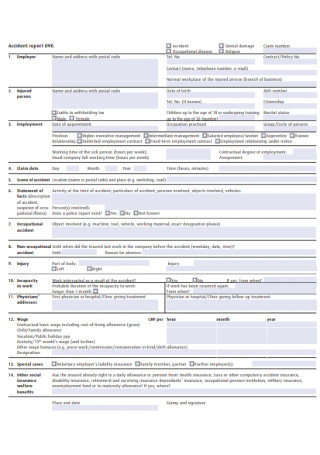
Basic Accident Report
download now -
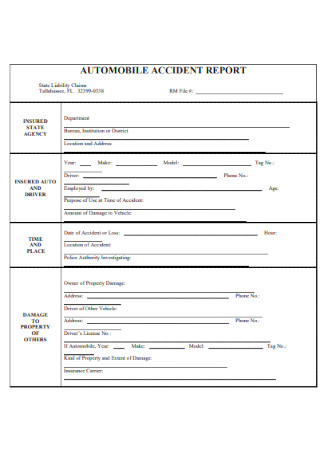
Automobile Accident Report
download now -
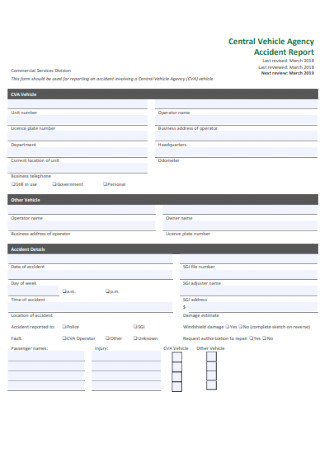
Vehicle Agency Accident Report
download now -

Automobile Accident Report
download now -
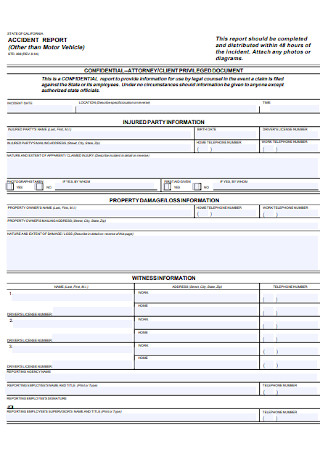
Client Accident Report
download now -
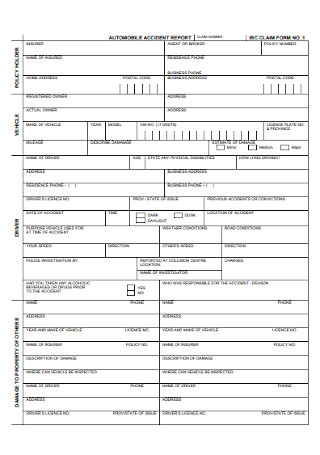
Simple Automobile Accident Report
download now
What Is an Accident Report?
An accident report is the written documentation of an accident. It is used in various fields and its aim is mainly to give a systemic account of an incident in order to resolve any issues that may have resulted from the accident.
According to recent statistics published by the National Safety Council, motor vehicle-related deaths were estimated to be at 3,760 in April 2021- establishing a 49% increase from the previous year. Further, the approximate cost of vehicular-related deaths, injuries, and damage to property was pegged at $150 billion in April 2021.
Types of Accident Reports
Accident reports are common in many fields. They are often standardized forms that need to be filled out by the persons involved or authority figures. The following examples are some scenarios where an accident report is often required:
Tips to Prevent Accidents
Obviously, accidents are part of regular life. Sometimes, they just happen and the only thing a person can do is learn from it and prevent it from happening again. However, there are several useful tips to keep in mind to lessen the likelihood of accidents and to prevent the inconveniences these accidents may bring.
How to Create an Accident Report
Making an accident report requires specific information and clear objectivity. You can opt to create one yourself but if it’s convenience you’re after, use an existing template above and simply customize it to your liking. Follow the steps below to ensure your report is effective and meets quality standards:
Step 1: State the Basic Information
If you are tasked to fill out an accident report, start by indicating your name and other basic information. These usually include the date and location of the accident, the time it occurred, your complete address and contact number. Most agencies and companies use standard forms and all the person needs to do is fill in the correct information. If law enforcement is involved, providing accurate contact information is important in gathering witness statements or accounts.
Step 2: Decide on a Format
Accident reports may vary in form and version. Companies and agencies have the free hand to decide on the format of the report. Some accident reports come in questionnaire forms or contain multiple lines and adequate space to accommodate detailed explanations. Keep your audience in mind when crafting your accident form. Do you want a simple form? Or do you want it to be more detailed with checkboxes and fixed questions?
Step 3: Properly Identify Key Characters
Writing accident reports, like police reports, is practicing good storytelling. Who were the key people involved? Not only should there be a clear account of what happened, the persons or characters involved should be described in detail as well. In the case of a car accident, a good report includes specific details of the driver of the vehicle as well as the victim or victims of the accident. Another common example would be a work-related incident. If an employee gets into an accident while on duty or on site, a good report would include not just the side of the employee but other people who were at the scene- such as witnesses or co-workers.
Step 4: Be Specific with Details
Avoid being too vague. A good and effective accident report is one that is specific and contains a good amount of details. To illustrate, do not just mention in the report that you saw a car; describe the vehicle and try to recall precise information about the car. This information is more useful to authorities than just a broad scope statement. Perhaps the most fundamental information you need to include in an accident report is the time and location of the incident. Those two details are vital in order to create a timeline of events and also to set the tone of the investigation, should there be a need for it.
FAQs
How do you write an accident report?
To write an effective accident report, accurate information should always be top of mind. Any falsehoods or fabricated stories will only worsen the situation. The aim of an accident report is to get to the bottom of the situation and establish the truth. Creating an accident report requires striking a delicate balance between descriptive language and objective storytelling. Make sure to lay down all the basic information and identify the people involved in the incident. Include any relevant details. The more specific the information, the better your report will turn out.
What is an accident report form?
An accident report form is a standard form that different institutions and companies use to record and document an accident. Formats may vary across agencies. Others prefer questionnaire forms while other reports may come in survey or freestyle versions. Regardless of format, an accident report should allocate enough space for narratives and explanations.
What is the use of an accident report?
An accident report is important because it helps promote the pursuit of truth and the establishment of facts- which is why an accurate account is crucial. Accidents are sometimes inevitable and a clear recollection of the incident is useful, particularly in instances where harm was inflicted on any person, pet, or property. The report is used to corroborate different testimonies and hold the right people accountable.
Accident and incident reports are one of the most universally used forms. Accurate and quality reports have the potential to uncover the truth and even bring justice. It is for that very reason that accident reports should always be sound and credible. Easily create your own report by using any of the sample templates above!
